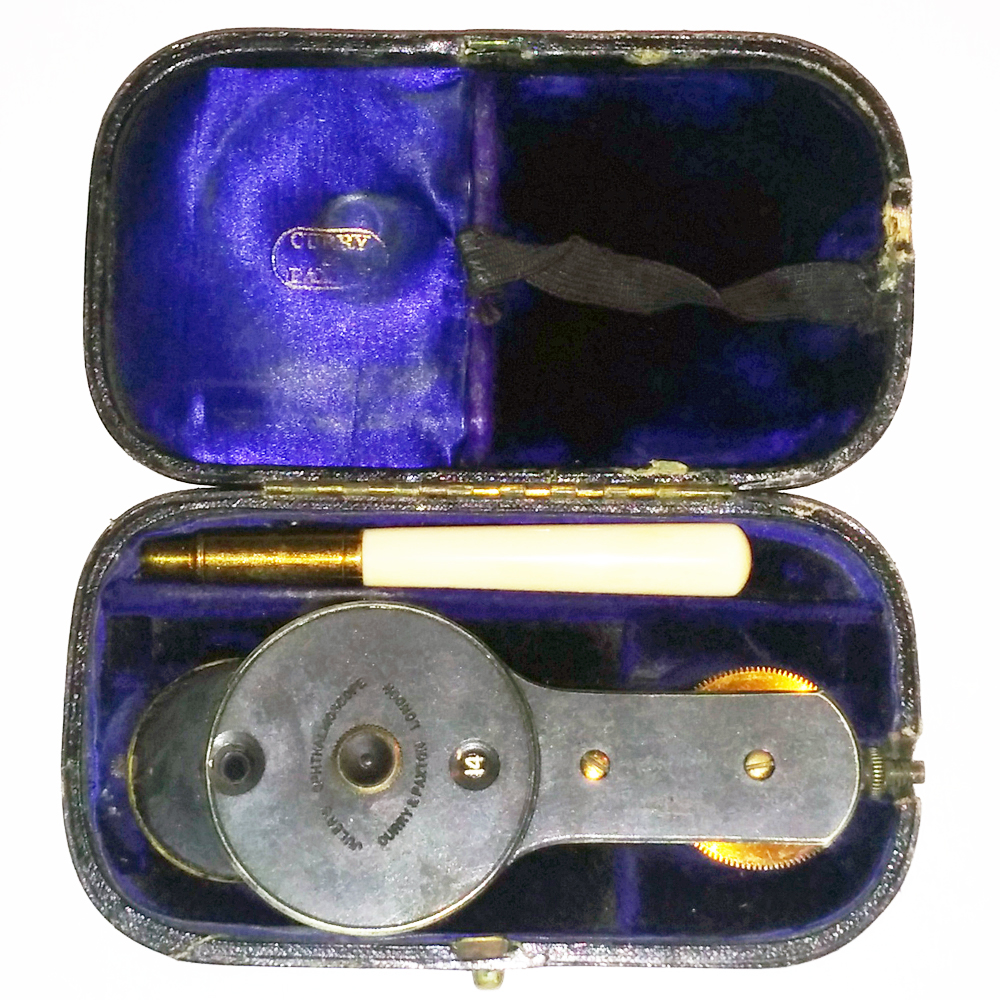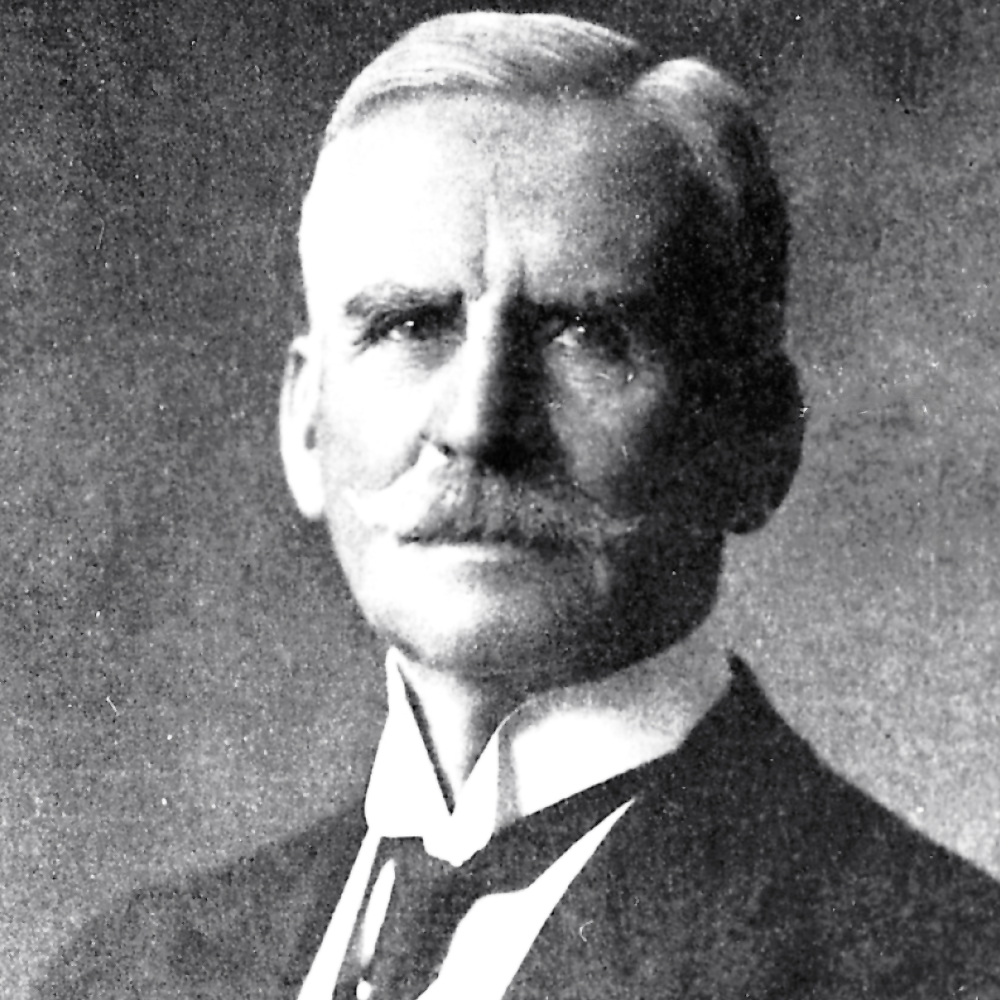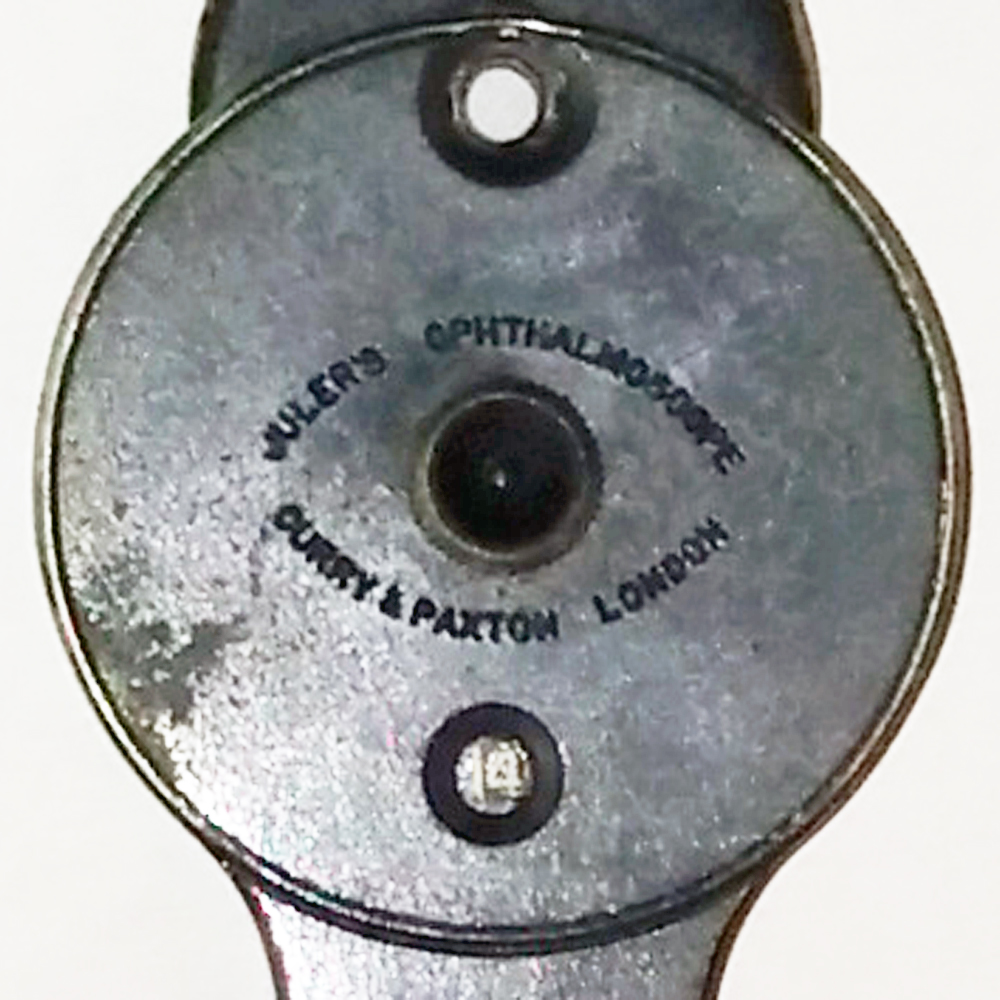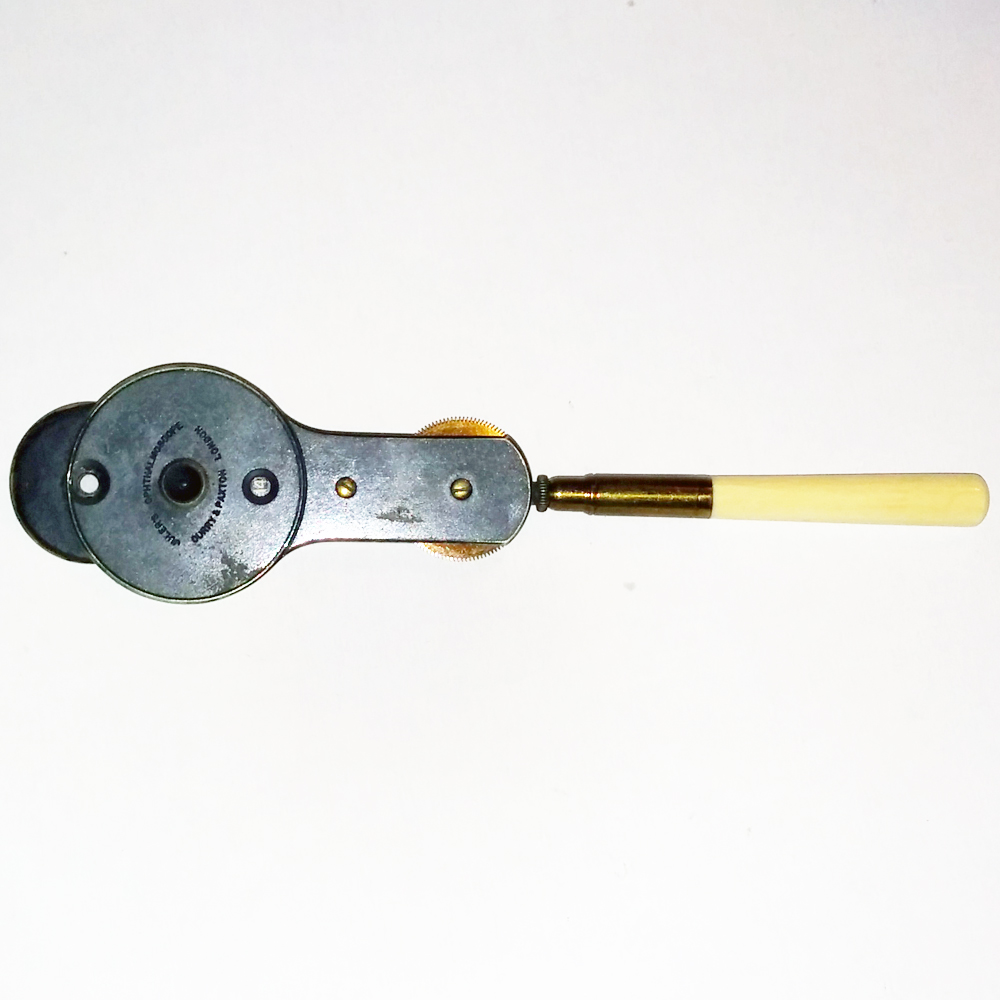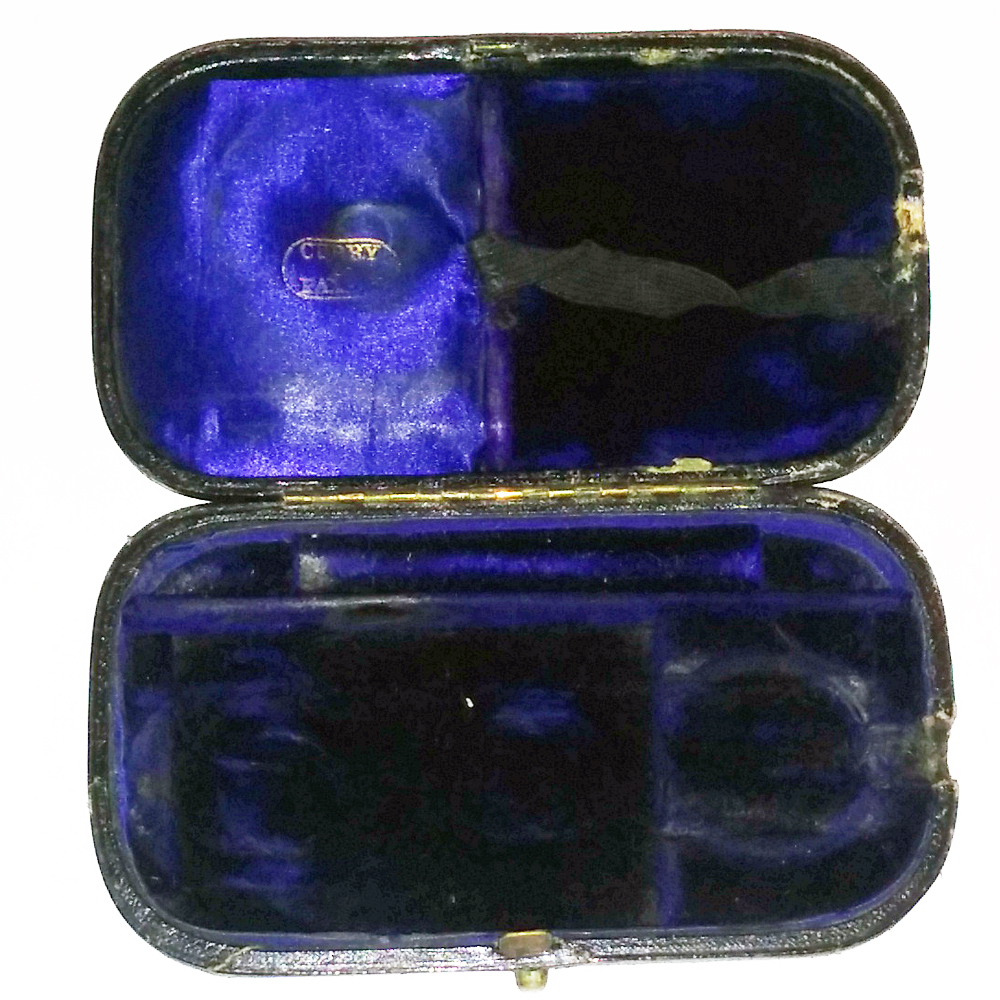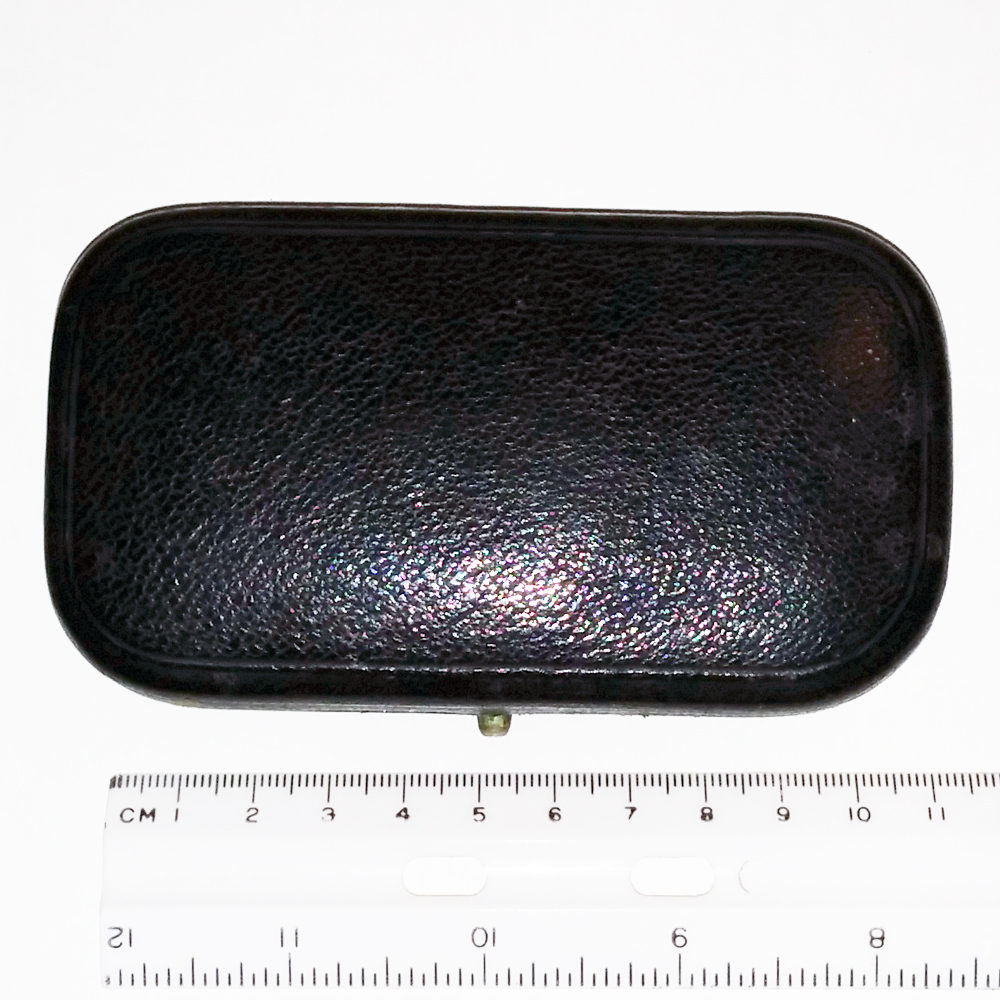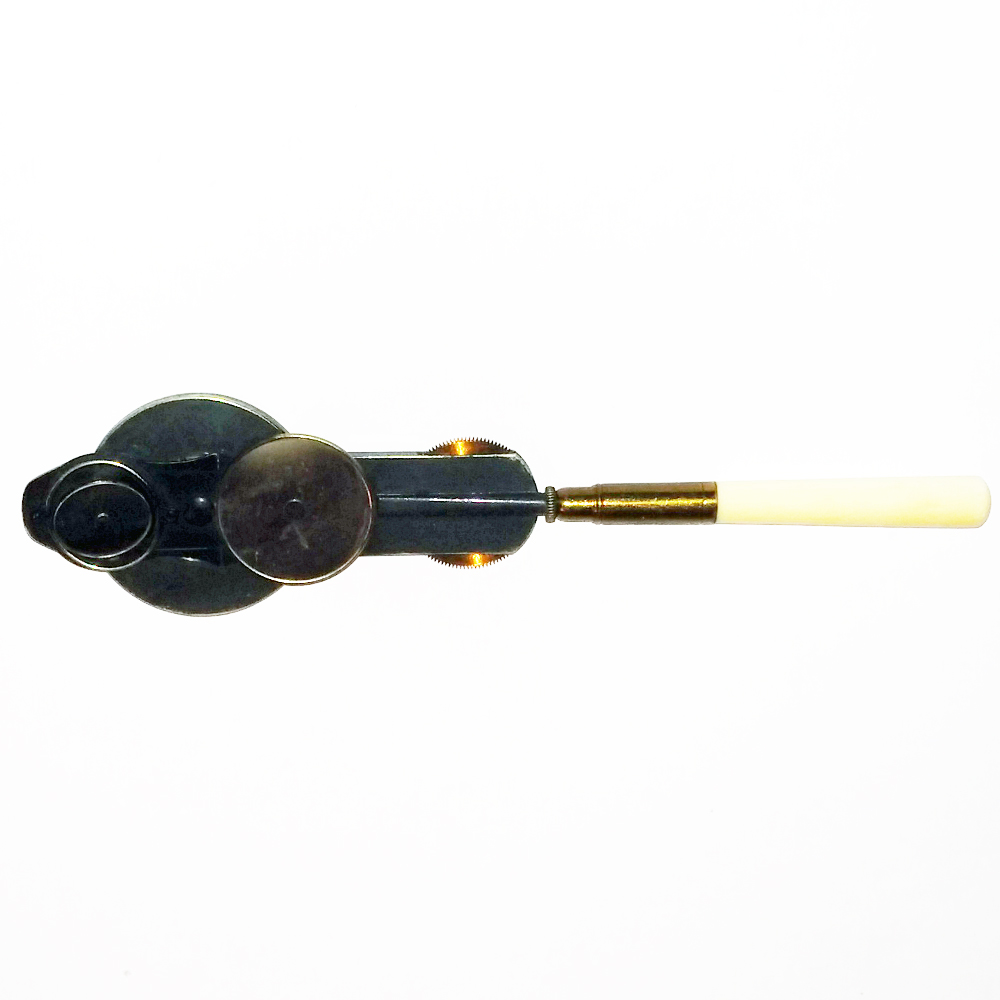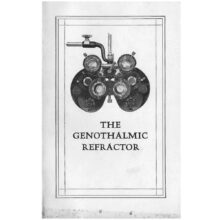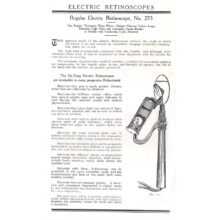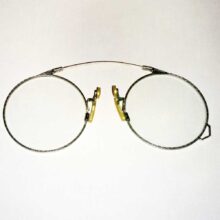Juler ophthalmoscope 1882
The original Juler ophthalmoscope has 21 lenses on one disc: convex (red) 1-2-3-4-5-6-7-8-9-10 diopters and concave (white) 1-2-3-4-5-6-7-8-9-10-15 diopters. They can be moved by means of a gear wheel. A combination sector has lenses of powers plus 0.5 and 12 and minus 0.5 and 20 diopters. A smaller, angled, concave mirror of 8 cm. focal distance or a larger concave mirror with a larger focal distance were available.
The simpler model, presented here, without a combination segment was more popular. It was offered for sale in two designs: with large and small angled concave mirrors and with a large plane mirror. In both types the mirror is mounted on a rotatable arm. This model has the small angled mirror along with the large plane mirror. The disc has 24 lenses: convex (red) 1-2-3-4-5-6-7-12-20 diopters and concave (white) 1-2-3-4-5-6-7-8-9-10-12-14-16-20- 30 diopters.
Four years later, in 1886, Juler wanted to make this simpler model electrically lighted. He presented it to the Ophthalmological Society of the United Kingdom on January 28, 1886. The electric light bulb was mounted on the outside directly under a small concave mirror of 1/2 inch focal distance.
For use of the instrument with an external light source the electrical portion could be removed and replaced by the earlier mounted mirror.
The model shown here has excellent condition mirrors. It is marked, “Juler’s Ophthalmoscope Curry & Paxton London”.
Henry Edward Juler (1842-1921) received his medical training at St. Mary’s Hospital in London, as well as in Paris, and Berlin. He passed the examination for Fellowship in the Royal College of Surgeons (F.R.C.S.), England. He worked under Anderson Critchett at St. Mary’s Hospital after 1884.
Juler took over as director of the eye department. He held this position until 1911.
Juler’s main work, “A Handbook of Ophthalmic Science and Practice”, appeared in 1884. It went through many editions.
Juler died in London in 1921.
